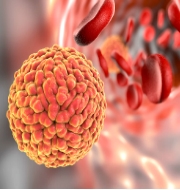Scientists creates world’s first stable semi-synthetic organism
Researchers from The Scripps Research Institute (TSRI), US have created world’s first stable semi-synthetic organism, a single-celled bacterium with an expanded genetic code
The semi-synthetic organism is the modified E.coli bacteria created by introducing DNA molecules that are not found in nature in a common bacterium.
How the new bacterium was created?
- Life’s natural genetic code only contains four natural bases- adenine (A), cytosine (C), guanine (G), thymine (T). These bases pair forms two base pairs in the DNA ladder.
- The newly created bacterium has two human-created X and Y bases that grow and divide, much like the four natural bases. This single-celled organism can hold on to the synthetic base pair as it divides.
- The human-created X and Y base pair was dropped over time in the bacterium that limited the ways the it can use the additional information possessed in their DNA.
- For this, researchers had optimised a tool called a nucleotide transporter, which brings the materials necessary for the unnatural base pair to be copied across the cell membrane.
- They discovered that modification to the transporter, made it much easier for the organism to grow and divide while holding on to X and Y.
- Researchers used gene editing tool CRISPR-Cas9 to design the synthetic organism to see a genetic sequence without X and Y as a foreign invader.
Potential Applications
- This research gives scientists an opportunity to ‘create organisms with wholly unnatural attributes and traits that are not found elsewhere in nature.
- In future, it can help in creation of microbes capable of manufacturing entirely new proteins, which can provide leads to new medicines and nanotechnology breakthroughs.
Month: Current Affairs - January, 2017
2 Comments
Leave a Reply
You must be logged in to post a comment.



kavya
January 30, 2017 at 12:23 pmwonderful..! but slowly this may lead to destruction of life…!
kavya
January 30, 2017 at 12:23 pmwonderful..! but slowly this may lead to destruction of life…!